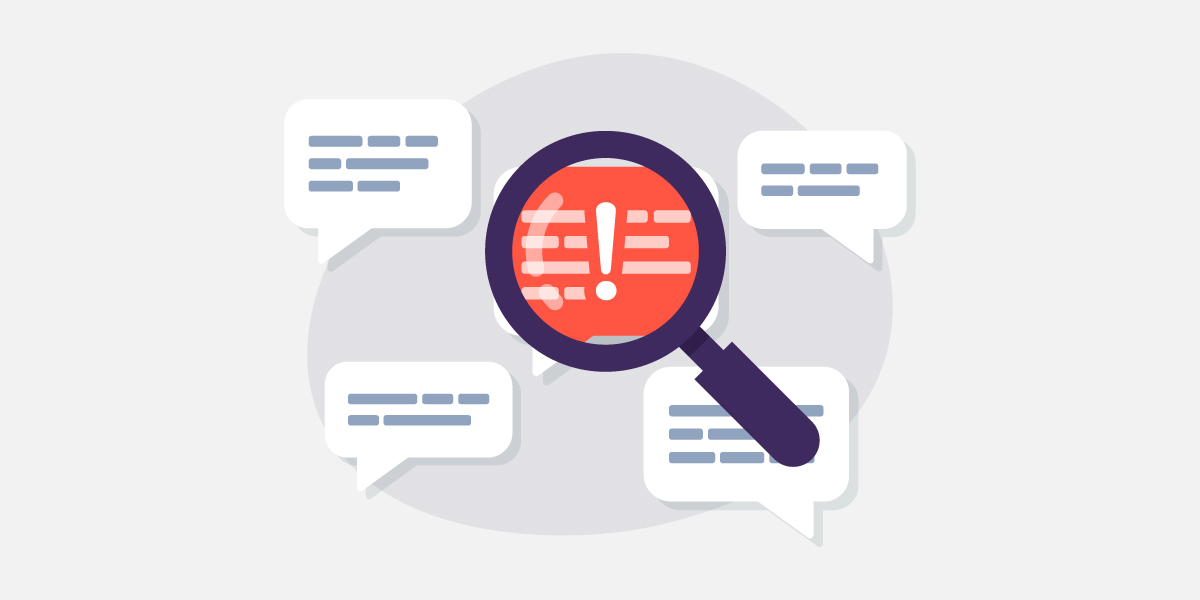Guide: How to build an SMS list from scratch

You may think it’s daunting at first, but building an SMS list from scratch can be simple and easy. As long as you have the right offer, tools, and strategies, you’ll be set up in no time.
Below, we’ll cover some mobile marketing concepts and also provide you with examples. If you came here by accident and already have a list, don’t leave yet—you should still find this guide useful.
How you can get opt-ins
Just like an email list, you need to have your customers' permission to send them an SMS marketing campaign. There are some exceptions to this, but we won’t get into it here. If you’re ever unsure of whether or not you have their permission already, it’s better to be safe then to be sorry.
You can get permission by having your customers:
- Give you their business card (but you still need to ask for their permission)
- Put their business card in a fishbowl at a trade show (make sure you have a sign that tells them that they’ll receive SMS messages about a specific topic)
- Purchase a product or service from you
- Complete an offline form like a survey or competition (be clear that you’ll send them SMS)
- Sign up from a website with a permission checkbox (the checkbox shouldn’t be pre-selected).
- Text an SMS keyword to your virtual number
There are many other tools out there to help you get permission, but in this guide, we’ll talk about point #5 and #6: online sign-ups and text to opt-in.
And before we dive into that, we should first talk about your compelling offer. Without one, any mobile marketing tactic you use will have lacklustre results.
Create a compelling offer
So what is a compelling offer?
A compelling offer is whatever your customers find very valuable. You offer it, sometimes for free, in exchange for their contact information.
Think of your customers’ greatest needs, wants, and desires, and then use that to create your compelling offer. What keeps them up at night? What gets them excited every day? What are their goals?
Each business is different, so your compelling offer might be one or more of the following:
- Free content: ebooks, reports, templates, e-courses, webinars, and guides
- Free consultations
- Free shipping
- Free trial / demos
- A giveaway—great prizes are simple to promote; make sure that it’s related to your business or industry
- A discount—make sure it’s a discount on your products or services
Whatever you decide, it should:
- Address a very distinct problem or type of customer
- Be exclusive and time-sensitive (urgency)
- Be very easy to claim or use
- Be high value
If you target a specific problem or type of customer, you’ll find it easier to create a compelling offer and mobile marketing strategy, which will help give you a better return on investment.
So what does a compelling look like? Here are some examples of compelling offers that we found that might give you some ideas:
 Targeting marketers, AdEspresso releases a lot of content on a weekly basis. One of their pieces is a compilation of 500+ amazing Facebook Advertisements based on their standards.
Targeting marketers, AdEspresso releases a lot of content on a weekly basis. One of their pieces is a compilation of 500+ amazing Facebook Advertisements based on their standards. Especially if your business is in the software-as-a-service industry, then free trials (or at least a demo) should be the norm. Customers try your products and need to convince themselves that it can help their business.
Especially if your business is in the software-as-a-service industry, then free trials (or at least a demo) should be the norm. Customers try your products and need to convince themselves that it can help their business. Everyone loves to travel—especially if it’s for free. Intro Travel gave way Intro tours for one winner and their friend to a destination of their choosing.
Everyone loves to travel—especially if it’s for free. Intro Travel gave way Intro tours for one winner and their friend to a destination of their choosing.
Is your head brimming with ideas yet? If you want to run your offers by us before you launch them, feel free to get in touch with us! We’re happy to provide feedback.
Build your SMS list with Keywords (Text to opt-in)
Text to opt-in is arguably the simplest and most effective opt-in mechanism. It’s easy for you to set up, and it’s even easier for your customers to use.
As it sounds, your customers text in an SMS keyword to your dedicated virtual number; and as a result, they subscribe to a list. The SMS keyword can be anything you want. For example, you can choose to use coffee, pizza, join, enter, win, fun, etc. We recommend that you use a word that’s relevant to your business or mobile marketing campaign.
Keep in mind that you need to lease a dedicated virtual number to use SMS keywords. There are several types of virtual numbers, and we recommend that you check out this article to learn more.
Here are some examples of other businesses promoting their SMS keywords:
 For a chance to win a $1500 shopping spree, Saks asks their customers to opt-in to their SMS list via text message. This is one compelling offer.
For a chance to win a $1500 shopping spree, Saks asks their customers to opt-in to their SMS list via text message. This is one compelling offer. Washington Capitals, an American Ice Hockey franchise, offered a chance to win tickets and a VIP experience by texting an SMS keyword to their short code.
Washington Capitals, an American Ice Hockey franchise, offered a chance to win tickets and a VIP experience by texting an SMS keyword to their short code.Promoting your SMS Keyword
SMS Keywords are also very easy to promote. Add it to your website, social media profiles, print advertisements (billboards, public transportation ads, in-store signage, invoices, receipts), traditional media advertisements (newspapers, magazines, television), and any other location you can think of.
Wherever you end up promoting it, your customers can opt-in to your list directly from their mobile phone, as long as they have a mobile network connection. Talk about convenience!
Leverage traffic from third-party websites
You can also take advantage of other websites that generate traffic because of the value that they provide. A great example is RetailMeNot, a voucher and deals website.
Add your SMS keyword or your website link to RetailMeNot along with your compelling offer. It’s completely free, and it can help build your mobile database over time without much effort on your part.
Build your SMS list with web forms
You might ask, “Why do we need a web form if opting via text is so much easier?”
There are a few reasons for this.
One, collecting additional information about your customers, like their name, occupation, and gender, is more difficult to do via an SMS message.
Two, with a web form, you can use workflow automation tools, which can help you save time.
Third, you can use text to opt-in and web forms in tandem. Many of our customers do this with a lot of success.
For example, GiveEasy, our donations platform partner, has a text-to-donate feature. Donors who text in with a specific SMS keyword receive an SMS auto-response with a unique donation link. Here, they can fill out their personal and credit card information on a mobile-optimised landing page. Their platform helped a not-for-profit raise over $30,000 in 30 minutes.
Web forms
Web forms are an obvious choice for building your SMS list. Instead of getting into too much detail, here are a couple of examples instead.
 Subway in the US offers customers a sandwich for $2.99 when they subscribe to their SMS list from their web form. Including their mobile number, they ask for postcodes, possibly to help geo-target their customers.
Subway in the US offers customers a sandwich for $2.99 when they subscribe to their SMS list from their web form. Including their mobile number, they ask for postcodes, possibly to help geo-target their customers. A home store chain in North America offers 20% off a single item online or in-store when you subscribe. Take a look at the amount of information they provide below the form about rates, messages to expect, and how to opt out.
A home store chain in North America offers 20% off a single item online or in-store when you subscribe. Take a look at the amount of information they provide below the form about rates, messages to expect, and how to opt out.Facebook Lead Ads
Have you heard of Facebook Lead Ads?
In case you’re not familiar with it, Facebook Lead Ads lets you collect your customers' information without them having to leave Facebook.
Facebook automatically fills out your customers' essential information, like their name and email, when they click the ad. All they need to do is click submit, making the process frictionless. Here’s an example:


You can adjust it to include additional fields, like their mobile phone numbers, to the form. If you ask for something specific that Facebook doesn’t have already, then they’ll need to fill it out on their own.
Note: If your target audience is primarily on LinkedIn, check out their Lead Gen Forms.

Zapier SMS
In case you’re unfamiliar with Zapier, it’s a workflow automation tool that helps you integrate your favourite web applications together. At the time of this writing, it can connect our online SMS service with over 1,100 web apps like Salesforce, HubSpot, Facebook, Google, QuickBooks, GitHub, and much more.
It works with Facebook Lead Ads and LinkedIn Lead Gen Forms.
When you get new leads from your Facebook Lead Ads or LinkedIn Lead Gen Forms, you can add them to your Burst SMS list and send them an SMS message to welcome them to your list.
Let’s use the Burst Shoes example above to help illustrate.
A customer signs up via the Facebook Lead Ad. Zapier adds their contact information to your Burst SMS list and then sends them this SMS message automatically:
Burst Shoes: Hi [name], welcome to Burst Shoes Family! Here’s your 30% off code as promised: SAVE30. Shop now: TapTh.is/link.
Opt out reply STOP
Here’s our complete list of integrations.
You can do this with virtually any application that helps you collect lead information. If you offer free consultations, then you might use Calendly to schedule appointments. Integrate it with Burst SMS via Zapier and start reaping the benefits of automation.


